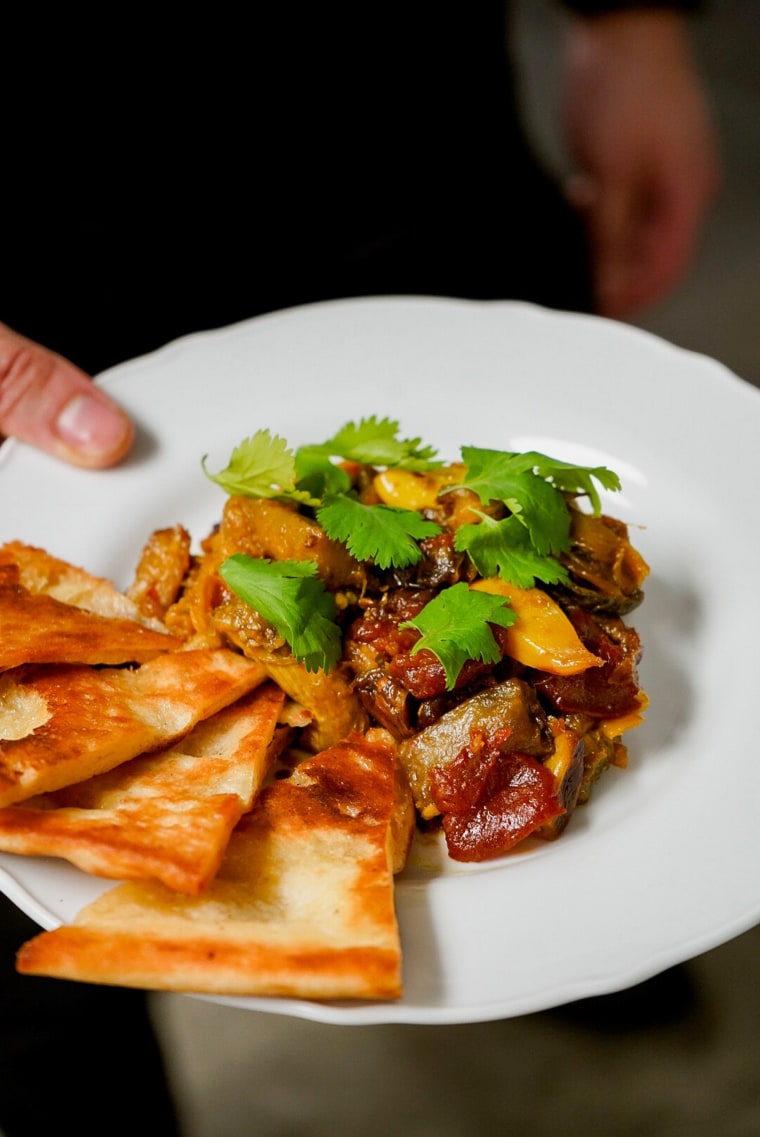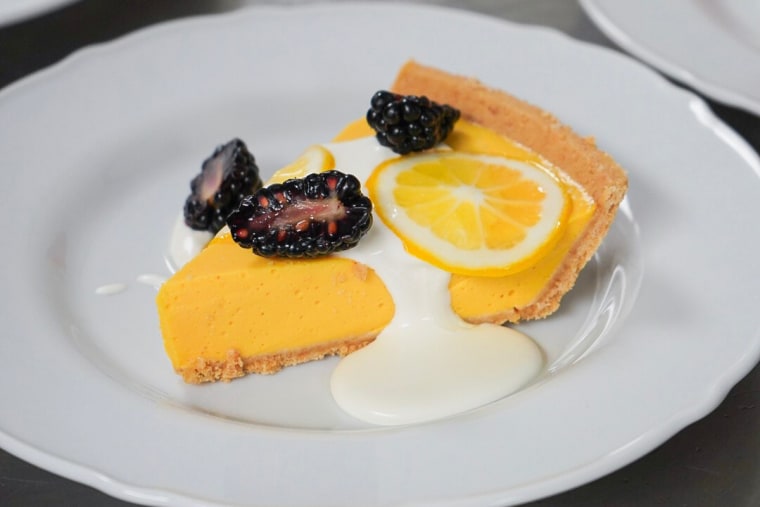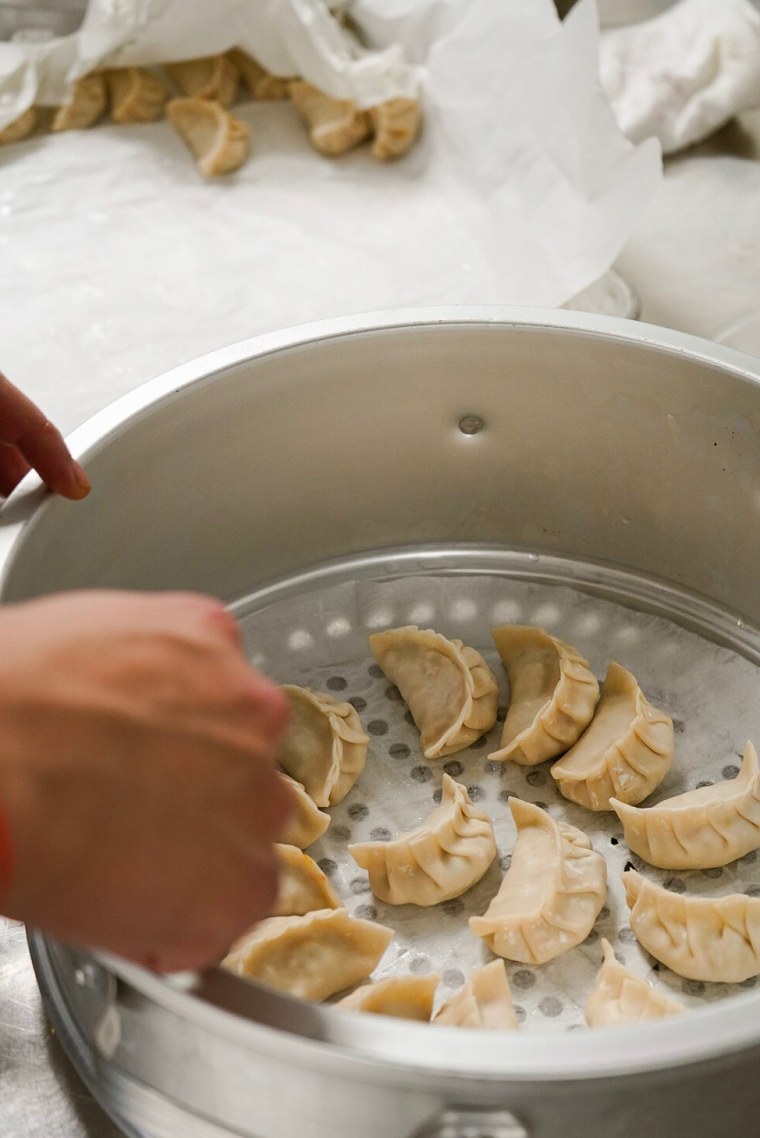At a new popup restaurant in New York City, Nepali spices and hand-wrapped momos highlight the traditions and culture behind the cuisine of the North Face region in the Himalayas, an area many only associate with extreme sports and puffer coats.
Nichi Pandey, 22, and Steven Li, 23, childhood friends who grew up in Maryland, wanted their new restaurant, the Orange Peel Cafe, in the Lower East Side to tell the story of the Nepal-Chinese border and its people.
The North Face refers to the north side of Mount Everest, also known as Sagarmatha in Nepali. Over 50 million people live in the Himalayas, which spans about 1,550 miles across the continent and borders five countries: Nepal, China, India, Bhutan and Pakistan. The north side of Everest is largely uninhabited and separates Nepal and China.
The area is most associated with the North Face clothing brand, but Pandey, who is Nepali, and Li, who is Chinese, wanted to honor their two distinctive cultures with the popup, which is in place through the end of May.

Pandey said he thinks the culture of the area is overlooked. “In some ways, it is disrespectful … people don’t appreciate the cultural aspect of it because they want the glory of climbing this mountain.”
The area’s mountainous terrain and harsh weather conditions have bred innovative cooking techniques and ingredients that are shared by both Nepal and China. The Orange Peel Cafe — a nod to peeling away and slowly revealing flavors — exemplifies these shared aspects in their weekly changing menu. They serve turmeric fried rice, reminiscent of rice served in tea houses throughout the Himalayas, pan fried pork ribs with sticky rock sugar sauce and what they refer to as a “childhood snack” of boiled eggs pan-fried with turmeric and chili flakes. And then there are, of course, momos — homemade and steamed-to-order dumplings filled with beef or tofu accompanied by Nepali spices like cumin and Timur pepper, a relative of Szechuan pepper found in the Himalayas.

“We started to realize, number one, a lot of the cooking is the same, but also, number two, in terms of this region, and because Nepal is the country that is smashed in between China and India and has a lot of influence from both, there are a lot of techniques and dishes that even though we call them different things, they’re really actually the same thing — and I think that that’s a powerful and cultural statement,” Pandey said.
Steven and Nichi both recalled coming up with a pork rib dish to add to their menu — as they discussed both the Nepali and Chinese way to prepare them, they realized the flavors and preparation techniques were not all that different. They both prepare the dish by cooking the pork ribs twice: first, poached in water, then fried with sauce and aromatics. Now, this dish is the newest addition to their evolving menu.

Preservation methods, like pickling, fermenting and smoking, are big in Himalayan culinary culture due to the harsh winter temperatures, and they can be found across both cultures. Foraging the surrounding area is also widely common, as gathering produce from beyond the mountain range is much harder.
Approximately 100,000 people visit Everest every year to try to scale the treacherous mountain, with the surrounding region relying on such tourism.
“The north face of the mountain is always notoriously the hardest side to scale … so as we’re embarking on a difficult endeavor, it seems fitting that it would be like climbing the north face of a mountain,” Pandey said.
Nepal has a rich history, being one of the only countries in the region to never have been colonized by the West. The country itself is geographically around the size of the state of New York but is ethnically diverse, with dozens of languages and dialects spoken. Due to its geographic location between India and China, there has been a natural culinary fusion among the countries.
“It all comes together in a way that historically and culturally developed separately, but when it gets to your table and you eat it — it feels familiar to the both of us,” Li said.
